Bedienungsanleitung Philips HD4646 Wasserkocher
Benötigen Sie ein Bedienungsanleitung für Ihren Philips HD4646 Wasserkocher? Unten können Sie das PDF-Bedienungsanleitung kostenlos auf Deutsch ansehen und herunterladen. Für dieses Produkt gibt es derzeit 6 häufig gestellte Fragen, 1 Kommentar und 0 Stimmen. Wenn dies nicht das von Ihnen gewünschte Bedienungsanleitung ist, kontaktieren Sie uns bitte.
Ist Ihr Produkt defekt und bietet die Bedienungsanleitung keine Lösung? Gehen Sie zu einem Repair Café, wo es gratis repariert wird.
Bedienungsanleitung
Loading…

Loading…
Bewertung
Teilen Sie uns mit, was Sie über die Philips HD4646 Wasserkocher denken, indem Sie eine Produktbewertung verfassen. Möchten Sie Ihre Erfahrungen mit diesem Produkt teilen oder eine Frage stellen? Hinterlassen Sie einen Kommentar am Ende dieser Seite!Mehr zu diesem Bedienungsanleitung
Wir verstehen, dass es schön ist, ein gedrucktes Bedienungsanleitung für Ihr Philips HD4646 Wasserkocher zu haben. Sie können das Bedienungsanleitung jederzeit von unserer Website herunterladen und selbst ausdrucken. Wenn Sie ein Originalhandbuch wünschen, empfehlen wir Ihnen, Philips zu kontaktieren. Möglicherweise können sie ein Originalhandbuch bereitstellen. Suchen Sie das Bedienungsanleitung Ihres Philips HD4646 Wasserkocher in einer anderen Sprache? Wählen Sie auf unserer Homepage Ihre bevorzugte Sprache und suchen Sie nach der Modellnummer, um zu sehen, ob wir sie verfügbar haben.
Spezifikationen
| Marke | Philips |
| Modell | HD4646 |
| Kategorie | Wasserkocher |
| Dateityp | |
| Dateigröße | 0.31 MB |
Alle Anleitungen für Philips Wasserkocher
Weitere Anleitungen von Wasserkocher
Häufig gestellte Fragen zu Philips HD4646 Wasserkocher
Unser Support-Team sucht nach nützlichen Produktinformationen und beantwortet Ihre häufig gestellten Fragen. Sollte Ihnen ein Fehler bei den häufig gestellten Fragen auffallen, teilen Sie uns dies bitte anhand unseres Kontaktformulars mit.
Welchen Zweck erfüllt das Sieb in meinem Wasserkocher? Verifiziert
Das Sieb ist dazu da, alle sich bildenden Kalkablagerungen aufzufangen.
Das war hilfreich (401) Mehr lesenDer Wasserkocher hört nicht auf zu kochen. Was ist zu tun? Verifiziert
In vielen Fällen liegt dies daran, dass der Deckel des Wasserkochers nicht richtig geschlossen wurde. Wenn Hitze aus dem Wasserkocher entweichen kann, wird der Wasserkocher weiterkochen. Sollte das Problem dennoch weiterhin bestehen, wenden Sie sich bitte an den Hersteller oder einen Reparaturdienst.
Das war hilfreich (265) Mehr lesenKann ich auch weniger als die Mindestmenge an Wasser kochen? Verifiziert
Nein, wenn Sie weniger als die Mindestmenge an Wasser kochen, kann der Temperatursensor ausfallen. Dies kann dazu führen, dass sich der Wasserkocher möglicherweise nicht am Siedepunkt abschaltet, und eventuell gefährliche Situationen verursachen.
Das war hilfreich (116) Mehr lesenIst es effizient, eine Teekanne mit heißem Wasser aus der Leitung zu füllen? Verifiziert
Nein. Um warmes Leitungswasser zu erhalten, muss häufig zuerst kaltes Wasser heruntergelassen werden, wodurch es verschwendet wird. Zudem füllen sich die Rohre mit derselben Menge an heißem Wasser, die nicht verwendet wird und auskühlt, was zu Energieverlust führt. Daher ist es besser, eine Teekanne mit kaltem Wasser zu füllen.
Das war hilfreich (75) Mehr lesenKann ich auch mehr als die Höchstmenge an Wasser kochen? Verifiziert
Nein, wenn Sie mehr als die Höchstmenge an Wasser kochen, kann es sein, dass der Wasserkocher überläuft. Dies kann eventuell gefährliche Situationen verursachen.
Das war hilfreich (69) Mehr lesenWie oft sollte ich meinen Wasserkocher entkalken? Verifiziert
Philips empfiehlt, den Wasserkocher bei weichem Wasser (bis zu 18 dH) alle drei Monate und bei hartem Wasser (ab 18 dH) einmal im Monat zu entkalken.
Das war hilfreich (30) Mehr lesen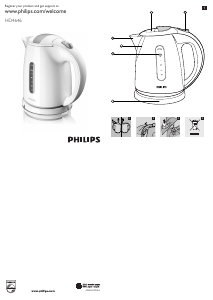


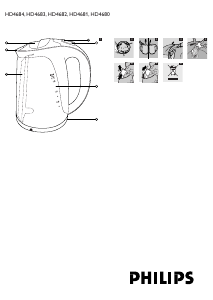
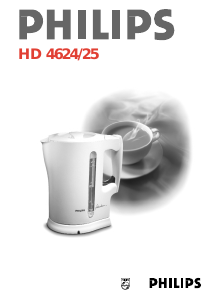
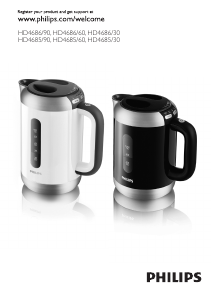
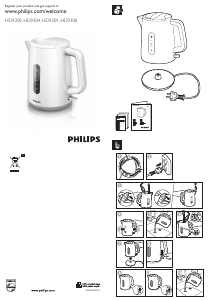
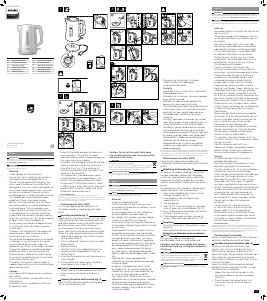
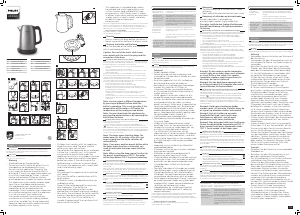
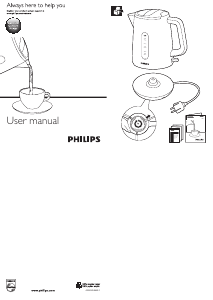
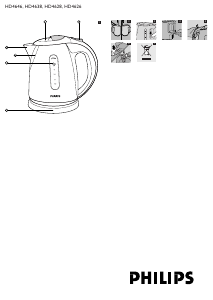
Diskutieren Sie über dieses Produkt mit
Hier können Sie uns Ihre Meinung zu Philips HD4646 Wasserkocher mitteilen. Wenn Sie eine Frage haben, lesen Sie zunächst das Bedienungsanleitung sorgfältig durch. Die Anforderung eines Bedienungsanleitung kann über unser Kontaktformular erfolgen.
Antworten | Das war hilfreich (0) (Übersetzt von Google)